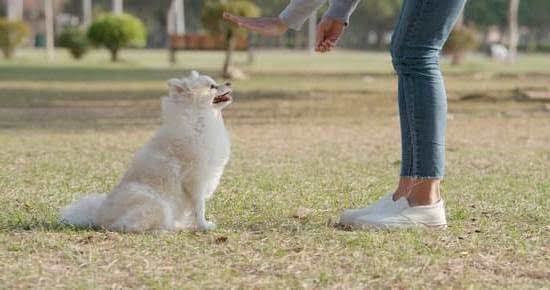Are you wondering how to train a dog to jump into water? Whether you’re looking to teach your furry friend a new skill or simply want to introduce them to the joys of swimming, there are several key factors to consider. In this article, we’ll explore the process of training your dog to jump into water, starting with understanding the benefits of swimming for dogs.
Swimming is not only a fun and enjoyable activity for dogs, but it also offers numerous health benefits. From providing a low-impact form of exercise that can improve cardiovascular health and muscle strength, to helping dogs cool off during hot weather, swimming is an excellent way to keep your canine companion happy and healthy.
Additionally, learning how to train a dog to jump into water can strengthen the bond between you and your pet, leading to increased trust and confidence.
In the following sections, we’ll delve into the importance of water safety for dogs and provide tips for assessing your dog’s comfort level with water. We’ll also discuss basic commands and obedience training as well as positive reinforcement techniques using treats and toys.
Finally, we’ll cover advanced training methods for teaching your dog to jump into water from a dock or boat, along with important safety precautions to keep in mind. So let’s dive in and explore the exciting world of training dogs to jump into water.
The Importance of Water Safety for Dogs
When it comes to training a dog to jump into water, it’s important to first understand the risks and emphasize the importance of water safety for dogs. Just like humans, dogs can encounter dangers when swimming in open water, so it’s crucial to be aware of potential hazards and take necessary precautions. Here are some key points to consider:
- Supervision: Always supervise your dog when around water, especially if they are still learning to swim or jump into the water.
- Currents and Tides: Be mindful of the strength of currents and tides in bodies of water as these can pose a threat to your dog’s safety.
- Water Quality: Ensure that the water your dog will be swimming in is clean and free from any harmful bacteria or pollutants.
Dogs may also face physical challenges such as fatigue or muscle cramps when swimming for extended periods, so it’s vital to keep an eye on their behavior and energy levels. By understanding these risks and taking appropriate safety measures, you can create a positive and safe environment for your dog to enjoy swimming and water activities.
In addition, it’s important to introduce your dog to water gradually and at their own pace. Some dogs may have a natural fear of water, while others may jump right in without hesitation. Understanding your dog’s comfort level with water is key to ensuring a positive experience and minimizing any potential risks. By prioritizing water safety, you can help your furry friend develop confidence in the water while staying safe at all times.
Assessing Your Dog’s Comfort Level With Water
Before you begin training your dog to jump into water, it’s important to assess their comfort level with being in and around water. Not all dogs naturally take to swimming, and some may even have a fear of the water.
The first step is to observe your dog’s behavior when they are near bodies of water, such as lakes, rivers, or pools. Some signs that your dog may be ready for water training include showing curiosity towards the water, eagerly following you into shallow areas, or showing a willingness to get wet during bath time.
It’s also crucial to consider your dog’s breed and physical characteristics. While some breeds are natural swimmers and are more likely to enjoy being in the water, others may struggle due to their body shape or coat type. For example, breeds with short legs or heavy torsos may find swimming more challenging.
Additionally, dogs with thick coats may become weighed down by their fur when wet. It’s essential to take these factors into account when determining whether your dog is ready for water training.
Another way to gauge your dog’s comfort level with water is by introducing them gradually to different environments. Start by allowing them to explore shallow areas where they can touch the bottom and gradually increase the depth as they become more confident.
Watching how they react and behave in these situations can give you valuable insight into whether they are ready for more advanced water training. By taking these steps, you’ll be better equipped to determine if your dog is prepared for jumping into water and swimming.
Getting Started
Establishing Basic Commands
Before introducing your dog to water, it’s important to establish basic commands such as “sit,” “stay,” “come,” and “leave it.” These commands create a solid framework for your dog to understand and follow your instructions, which are crucial when introducing them to new environments such as bodies of water.
Building Obedience Training
Obedience training is an ongoing process that requires consistent practice and reinforcement. By teaching your dog basic obedience skills, you are also laying the groundwork for more advanced water-related activities. Start by incorporating these skills into daily routines and gradually introduce them in proximity to water sources such as pools or lakes.
Patience and Consistency
Training a dog to jump into water requires patience, consistency, and positive reinforcement. Celebrate small victories during each training session and be patient with your dog as they adjust to this new experience. Consistency in training methods and expectations will help build their confidence and trust in you as their handler.
By focusing on basic commands and obedience training, you can set the stage for a successful transition into more advanced water-related activities with your dog. Remember that every dog learns at their own pace, so it’s important to tailor your training approach to suit their individual needs while keeping their safety as the top priority.
Positive Reinforcement Techniques
Training a dog to jump into the water can be a fun and rewarding experience for both you and your furry companion. One of the most effective methods for achieving this is through positive reinforcement techniques. By using treats and toys, you can encourage your dog to confidently enter the water and embrace swimming as an enjoyable activity.
Choosing the Right Treats and Toys
When it comes to positive reinforcement, selecting the appropriate treats and toys is crucial. Choose high-value treats that your dog loves and responds well to. These could include small pieces of cooked meat, cheese, or special dog treats specifically designed for training purposes. Additionally, pick toys that your dog enjoys playing with on land, as these can be used as an additional incentive to enter the water.
Using Treats and Toys Effectively
In order for positive reinforcement to be successful, timing is key. When introducing your dog to the water, have the treats or toys readily available to reward them for any sign of bravery or willingness to approach the water’s edge.
As your dog becomes more comfortable and begins to enter the water, use treats and toys as a form of praise and motivation. This will create a positive association with swimming and reinforce their desire to participate in this new activity.
Gradual Progression
As with any training technique, patience is essential when using positive reinforcement methods. Start by rewarding small steps towards the water, such as showing interest or approaching the shoreline.
Gradually increase the criteria for earning rewards by requiring your dog to get closer to or even step into the water before receiving their treat or toy. By taking small steps and providing consistent positive feedback, you can help build your dog’s confidence in entering the water while strengthening their bond with you through this shared experience of training.
Gradual Exposure
Once you have assessed your dog’s comfort level with water and have started with basic commands and obedience training, it’s time to begin gradual exposure to water. This is an essential step in building your dog’s confidence and trust in the water.
One way to do this is by taking your dog to a shallow area where they can touch the bottom of the water while still being able to stand comfortably. This will help them acclimate to the sensation of being wet without feeling overwhelmed.
It’s important to introduce positive reinforcement during this gradual exposure phase. Use treats, toys, and plenty of verbal praise to encourage your dog as they explore the water. Always keep the experience positive and upbeat, making sure that your dog feels safe and secure throughout the process. This will help them associate the water with fun and rewards, fostering a positive attitude towards swimming.
As your dog becomes more comfortable with being in shallow water, gradually increase the depth as they become more confident. Remember to always supervise your dog closely during these sessions, providing reassurance and support as they navigate through their newfound aquatic environment.
| Training Techniques | Description |
|---|---|
| Positive Reinforcement | Using treats, toys, and praise to encourage dogs during gradual exposure. |
| Supervision | Always keeping a watchful eye on your dog when introducing them to deeper water. |
| Consistency | Repeating gradual exposure sessions regularly to build confidence over time. |
Advanced Training
Teaching a dog to jump into water from a dock or boat can be an exciting and rewarding experience for both you and your furry friend. However, it’s important to approach this advanced training with patience and a focus on safety.
Before beginning this training, ensure that your dog is comfortable with swimming and has mastered basic obedience commands such as “sit,” “stay,” and “come.” Additionally, make sure your dog is familiar with the water area where they will be jumping, whether it’s a calm lake or a river.
When teaching your dog to jump into the water from a dock or boat, start by getting them comfortable with the environment. Allow them to explore the area at their own pace and observe their surroundings. Use positive reinforcement techniques such as treats or toys to create a positive association with the dock or boat. Once your dog seems at ease, lead them onto the dock or boat and continue to provide encouragement and rewards.
The next step is to practice having your dog jump into the water from a low-stress point on the dock or boat. You can use commands like “jump” or “water” paired with hand gestures to signal your dog to go into the water.
Gradually increase the height of where they are jumping from, always keeping an eye on their comfort level. With consistent practice and patience, your dog will soon become confident in leaping into the water from various heights, making for an exhilarating bonding experience for both of you.
| Key Points | Data |
|---|---|
| Basic Commands Mastery | Essential before starting advanced training |
| Environment Familiarization | Allowing dogs to explore the area at their own pace |
| Gradual Height Increase | Increase height of jumping gradually while keeping an eye on comfort level |
Safety Precautions and Considerations
When it comes to training your dog to jump into water, safety should always be a top priority. While swimming can be an enjoyable and beneficial activity for dogs, there are also potential risks associated with open water. As a responsible pet owner, it’s important to understand these dangers and take the necessary precautions to keep your furry friend safe.
Here are some important safety considerations to keep in mind when training your dog to jump into water:
- Supervision: Whether you’re at a pool, lake, or beach, always supervise your dog closely when they are around water. Even dogs who are strong swimmers can get into trouble if they become tired or disoriented while swimming.
- Water Quality: Be mindful of the water quality at the place where you plan to train your dog. Avoid areas with algae blooms, pollution, or strong currents that could pose a danger to your pet.
- Life Jackets: Consider using a canine life jacket, especially if your dog is new to swimming or will be in deep or fast-moving water. This can provide an extra layer of safety and buoyancy for your pet.
By prioritizing safety and being aware of potential hazards, you can help ensure that both you and your dog have a positive experience when training for water activities. Remember that while swimming can be fun and rewarding for dogs, it’s essential to approach it with caution and responsibility.
Conclusion
In conclusion, training a dog to jump into water can be a rewarding and enjoyable experience for both you and your furry companion. By following the outlined steps and techniques, you can help your dog develop a newfound love for swimming and water activities. It’s important to remember that not all dogs will take to water immediately, so patience, positive reinforcement, and gradual exposure are key to success.
By taking the time to assess your dog’s comfort level with water and implementing basic commands and obedience training, you can build a foundation for safe and enjoyable water experiences. Using positive reinforcement techniques such as treats and toys can further encourage your dog’s confidence in the water, making the training process fun and rewarding for both of you.
As you progress to more advanced training, such as teaching your dog to jump into water from a dock or boat, it’s crucial to prioritize safety precautions and considerations. Understanding the risks of open water and being mindful of potential dangers will ensure that your dog’s newfound love for swimming remains a safe and positive experience. With dedication, patience, and careful attention to safety, you can celebrate your dog’s achievement in becoming a confident swimmer.
Frequently Asked Questions
How Do I Teach My Dog to Jump Into Water?
Teaching a dog to jump into water can take time and patience. Start by finding a shallow body of water, such as a pond or lake with a gentle entry. Use positive reinforcement, like treats or toys, to encourage your dog to approach the water and eventually step in.
Gradually introduce deeper water and continue to praise and reward your dog for their bravery. It’s important to make the experience fun and safe for your dog, so never force them into the water if they seem uncomfortable.
How Can I Encourage My Dog to Go in Water?
To encourage your dog to go in water, it’s important to create positive associations with being in or near the water. Start by introducing your dog to calm bodies of water like ponds or shallow pools where they can wade in easily.
Bring along toys or treats to entice them into the water, and provide lots of praise and encouragement when they venture in. Take it slow, be patient, and remember that not all dogs are natural swimmers, so it’s okay if they don’t take to the water right away.
How Do You Break a Dog’s Fear of Water?
Breaking a dog’s fear of water requires understanding and patience. Identify what specifically triggers your dog’s fear – whether it’s the sound of running water or a negative past experience – so you can work on desensitizing them to it slowly. Use positive reinforcement techniques like treats, toys, and praise to create new positive associations with being around water.
Encourage small steps at first, such as simply being near the water without any pressure to enter it. With time and patience, most dogs can overcome their fear of water with consistent positive experiences.

Welcome to the blog! I am a professional dog trainer and have been working with dogs for many years. In this blog, I will be discussing various topics related to dog training, including tips, tricks, and advice. I hope you find this information helpful and informative. Thanks for reading!





